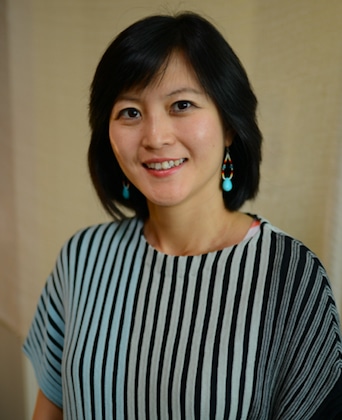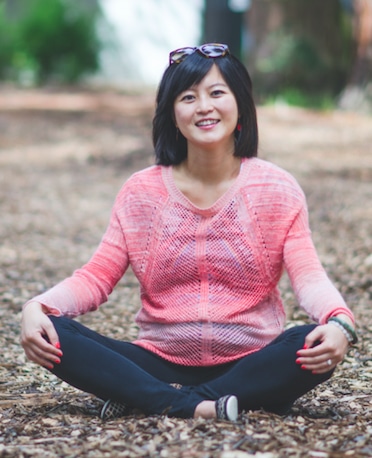
Eva Woo, co-founder, Make-a-Point.
“Today, the young people…. want to do something they’re passionate about, something that’s meaningful.”
By Paksy Plackis-Cheng
Make-a-Point works with an array of community stakeholders to tackle societal issues through design innovation. Organizations such as United Nations Development Program (UNDP) China, business giant JD.com,[1] and Nestlé China have been part of Make-a-Point’s Smart Room, a platform that provides collaborative tools to innovative social and economic drivers.
impactmania spoke with the co-founder of Make-a-Point Eva Woo on building a disaster relief program and the differences between Chinese youth and the generation before them.
Why Make-a-Point?
The organization was formed the summer of 2016. I was having coffee with Janson Cheng, the co-founder of Make-a-Point and a brilliant graduate from Transdisciplinary Design at Parsons School of Design. We wanted to design for the common good and co-design for the emergent future.
A lot of people can convene people, but the difference is the use of social technology to engage in a design innovation platform. Make-a-Point has a Smart Room that offers tools related to social behavior and social interactions. The goal is to facilitate multiple stakeholders to create products and services with both economic and social impact. We believe strongly that any invention should be a social business.
I was part of a social enterprise before, an engagement platform in the media that promoted social and economic impact. How do we bring social and economic impact and leverage a network of young global changemakers? A lot of them are trained and educated outside of China. With their expertise, they are creating work within a large organization to bring change to different fields.

Make-a-Point team photo was created with Photoshop since everyone is located in different locations.
Your stakeholders are from diverse sectors: government, academia, corporations, and nonprofits. How does collaboration work?
For each project we have a main sponsor. This is usually a business stakeholder that has a goal. They want to create a new product line, services, or better serve their customers.
Instead of lengthy market research, we help the business drive a key social issue, while connecting with their customers. We launch a campaign with experts from different organizations and government. This partnership is often a design workshop to come up with prototypes.
Businesses have increasingly challenging environments, because they’re out of touch with their customers. The focus on profit and efficiency has disconnected businesses from customers.
If you think Silicon Valley is changing fast—the speed of innovation, the demographic change, the change of values in young people—change is coming even faster in China. It’s even faster because of the rapid economic and social development. People in their 30s and the younger people are different species.
Can you give me an example?
When I grew up, people cared a lot about brand-name labels. People would join a large, well-known company and climb the corporate ladder. We’d go to work in a fancy office in a skyscraper. That was how you proved you were successful. Today the young people don’t care for those things. They want to do something they’re passionate about, something that’s meaningful.
They believe if they do the things right, the economic value will come. That’s the biggest difference. In China, there is this magazine, China Youthology (Qingnian zhi) that analyzes the younger generation. They show that young people are willing to pay a premium for socially responsible products. That means that businesses have to respond to these new consumers’ desires.
These companies are choosing firms like Make-a-Point to try our process, which is faster and less expensive than working in-house or with a large agency’s teams, in order to generate insights, ideas, and prototypes.
How do you help a company address a social issue?
The first step is creating an engagement network, which is an issue-based action network. You convene stakeholders. The Young Asian Program, for example, is an engagement network designed for better and healthier people in China.
We began to assemble a network that could come together with the main initiator of the program and in this case, Nestlé China. Nestlé wanted to see what possible roles food and beverage can play in the lives of older Chinese people. They wanted to plan an event for elderly people. We assembled 20 organizations, corporations, hospitals, and traditional Beijing community centers. There were more than 200 medical professionals, researchers, and designers for this weeklong workshop.
What happened when they convened for the workshop?
We took weeks for the team to design a process of how to identify the key issues. It is a process that you design to enable individuals from different backgrounds to make sense and solve a complex problem collectively.
Everyone has a different agenda for what they want to accomplish. How do you focus on an issue that matters to each of the stakeholders?
Yes, that is the challenge. People submit an application, so you can find commonalities. People don’t always talk to each other, because they’re from different silos. They have different ways of thinking and doing things. Then you have some authoritative members hijacking the conversation, because they think they know more. Imagination is also limited to what’s out there, most can’t think outside the box.
We research, find materials, and interview people. People understand the issue, so when they come in, everything is well-documented. That’s one thing I love about the Make-a-Point team. The team has a rigorous practice of documenting and sharing everything so everybody is on the same page.
What issue did you end up addressing?
We wanted to help families to discover and communicate their values about retirement. We wanted to help drive communication and a discovery about their wishes over dinner. The intergeneration communication is tough in China. There is a big communication gap between these two generations, the parents and their adult children.
We came with a “kidding kitchen” — grown children need to do kidding versus parenting. It became a fairly dynamic experience to help parents explore potentials after their retirement. This is a challenging conversation in the Chinese culture, because parents oftentimes will say, “Whatever works for you” to their grown children. They are very selfless. They sometimes don’t really know what they want to do after retirement. This is to help open them up for that discussion.
What are some of the findings?
A lot of adult children want their parents to move in with them. The parents now become migrants at age 50-60, finding themselves in a new city and very isolated. They are serving as their children’s nanny and helper. Many want to explore the new city they are in, but they don’t have a network and don’t want to bother their children.
What do you do with these comments? Is there follow-up?
Yes, a number of prototypes were developed. There was a tricycle and a network that helps the retirees navigate a new city. It becomes a support network for people. It raises awareness for the elderly, issues of mobility, and of a network.
I understand you are also working on a disaster relief program in China. Since this is an issue that the world is facing on a more and more frequent basis, could you talk about the project?
Yes, the disaster relief platform is still ongoing. China had this huge earthquake in Sichuan, which killed 70,000 people. A lot of businesses wanted to help. It was so complicated that people ended up not helping in the most effective ways. China has a very top-down system: the government can mobilize resources quickly with a “white list,” a capability list of organizations and companies. When a disaster happens, organizations on the white list get called. But a disaster is a very dynamic situation; needs are changing all the time. If you follow the whole cycle: you gather information in the field, then you have a decision-making center, and then you allocate resources. All of this takes a long time. We wanted a platform that could dynamically optimize the process to match companies’ core capabilities.
The China Charity Federation, Peking University, and Beijing Normal University have departments working on this platform. Logistics across China can be quite complicated. We are looking into how people should donate, how the disaster relief team can better utilize these capabilities, and how to better match resources with the relief process.
And yes, this is not only important for China. How do we expand the Smart Room virtually to a bigger network, to engage people, expertise, and domain experts? How do we share what have we learned in order to design the best process?
This is not your first involvement with an organization that tries to drive cultural, social, and economic impact. What were you surprised to learn?
It’s surprising to me that the young generation learns at such an incredible speed. That, and the way they sync with the global issues. They’re very open-minded. There is this shared value. I am impressed with the young people in China.

Where is that coming from?
A lot of them were educated overseas. It is probably because they’ve interacted with global changemakers. They are all voracious readers of new theories and new models.
What’s next for you? Apart from a baby on the way, which is a big project too!
[Laughter.]
Yes, that’s a big project. I’ll continue to juggle. I do things that I feel are right for society, and that I’m passionate about.
With the rapid changes in the world, what do you think the most important thing you will teach your child will be?
I saw your presentation online, and I agree about the value of creativity and art. That, and having an open mind to look beyond the labels of things and other people’s labels for you.
[1] JD.com is the leading online shopping platform in China.

